How I Finally Embraced the Apple Watch as a Fitness Tracker
I’ve worn an Apple Watch on and off since it debuted in 2015, but only recently have I embraced it for health tracking for three reasons:
- I started getting serious about fitness because my health has steadily declined for a few years.
- I recently came down with COVID-19 and wanted to monitor my heart, sleep, and overall condition, both to stay on top of any side effects and to gauge when it would be safe to go back to the gym.
- I realized that the Apple Watch itself is a decent fitness tracker, but Apple’s fitness-tracking software is weak. However, the advantage of the Apple Watch over competing fitness trackers is you can use whatever apps you want to interpret the watch’s sensor data.
I’ll share what has been working for me, and I hope it will give you some ideas about how to take better advantage of your Apple Watch’s fitness-tracking capabilities.
Keep in mind that all fitness trackers present educated guesses based on subtle sensor data. All the sleep-tracking apps I’ve tried can show wildly different results from the same measurements, and step-counting apps may show steps taken when you haven’t even gotten out of bed. They’re primarily useful for giving you a rough idea of trends and making you more aware of how active or inactive you are.
The Problem with the Activity/Fitness App
Activity (called Fitness on the iPhone) may be the most well-known Apple Watch app. It seems as though every new Apple Watch owner wants to fill their Activity rings and share their streaks on social media. But I’ve also noticed that the enthusiasm for keeping up with the rings doesn’t always last long. While the ring concept is fun and simple to grasp, the way Apple calculates activity is both confusing and discouraging.
If you’re not familiar with the Activity rings, they are:
- Move: The red Move ring displays how many active calories you’ve burned (as opposed to passive calories that your body burns purely by existing). While I’m skeptical of the calorie calculation, this is probably the most useful Activity metric, if primarily in the “more movement is better” category. You can change the calorie goal to whatever you want, so it’s easy to ensure success or challenge yourself, whichever you prefer.
- Exercise: Apple says the green Exercise ring measures how many minutes of “brisk activity” you’ve done, but it doesn’t go into specifics. We think it’s a combination of movement and heart rate when you’re not using the Workout app.
- Stand: The blue Stand ring shows how many hours per day you stand up. Not how many hours you’re standing, but how many hours within which you stood up, even briefly. The goal is to stand up at least once in each of 12 hours every day. It’s good to get sedentary Americans to stand more, but I’m not sure it’s that helpful. Despite hitting this target nearly every day, I developed terrible hip and back pain over the past few years. It’s also annoying when it wants you to stand up during a movie, while riding in a car, or when the seatbelt sign is on during an airplane flight. Even more annoyingly, those who stand all day get reminders to stand anyway, since it only notices a change in position, not the position itself.
I’m most perturbed by the Exercise ring. It matches up well with typical cardio workouts like running and cycling, but not with activities like strength training and farm work. There have been many days when I spend the entire day working outside but the Exercise ring doesn’t budge. And I’m not just sitting on a tractor. I don’t even own a tractor! I cut almost all of my grass with a scythe, which should count as exercise. It’s frustrating when I walk inside absolutely exhausted at the end of the day and the Exercise ring has hardly moved. Then I get a notification at bedtime encouraging me to walk a mile to close my rings. Behavior like that has made me hate the Apple Watch for years.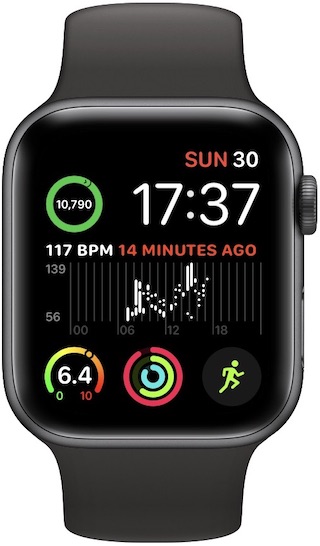
The screenshot illustrates the absurdity of Activity’s rings. I spent 90 minutes lifting weights in the gym and walked over 10,000 steps for the day. Granted, I had just recovered from COVID, so I was moving at an easy pace, but I still put a lot of work in. Athlytic, an app I’ll describe shortly, gave me a rating of 6.4 out of 10 for daily effort, which seemed fair, yet I still hadn’t closed my Move ring, and my Exercise ring was only a little over halfway full. Absurd.
If you’ve found yourself discouraged by the Activity rings failing to reflect your actual activity, you’re not alone. I can’t think of anything more demoralizing than working yourself to the bone and then having your watch tell you you’re a lazy bum.
I hope Apple improves the Apple Watch’s built-in fitness tracking in watchOS 9. The company has dramatically improved almost every other aspect of the watch.
Heart and Health Are Pretty Good
My experience isn’t entirely bad. The constant heart monitoring and having an ECG on my wrist are incredible. I particularly appreciated them when I was sick with COVID since I could monitor my elevated heart rate and take an ECG every day to make sure nothing funky was going on. I could then see when my heart rate started to drop back to normal.
I’ve said many uncharitable things about the Health app over the years, and its interface leaves a lot to be desired. But as a technology for allowing apps to share health-related data, Apple Health (which seems to be how third-party apps refer to the back end) is amazing. It enables my activity-tracking app, calorie-counting app, and smart scale app to talk to each other, giving me a good idea of my calorie intake versus output and how that corresponds to my weight and body fat percentage (see “Track Your Weight with the Eufy BodySense, an Affordable, HealthKit-Compatible Smart Scale,” 13 July 2018). The fact that I can use apps from three different developers to gather and see that information is incredible.
If you look at the Health app as a front-end to Apple Health’s database of sensor readings, the mediocre interface makes a little more sense. The problem is that Health tracks so much data that it’s overwhelming. The trick is to set the metrics that most interest you as Favorites so you can easily see them on the main Summary screen. If you have a specific health condition, your doctor may have already told you to keep an eye on certain metrics, but if not, it can be hard to know where to start.
Here are the metrics I’m currently tracking in favorites and why I’m tracking them:
- Body fat percentage: automatically measured by my smart scale. More important than mere weight, this number helps me keep track of how much fat I’m losing (or gaining) over time.
- Body mass index (BMI): also measured by my smart scale. BMI isn’t all that helpful compared with body fat percentage. For instance, if you’re muscular, your BMI might classify you as obese. However, I am not, so I’m keeping tabs on it for now since it’s trending down and that’s encouraging.
- Cardio fitness: an estimate of VO2 max and an indicator of overall cardiorespiratory health. Mine is pretty low, so it’s an incentive to get on the exercise bike.
- Heart rate variability (HRV): a subtle but important metric of overall health. I like tracking HRV to see if it’s increasing over time, though apps like Athlytic are better for putting it in context.
- Resting heart rate: a useful indicator of recovery from stress or illness. I’m hoping to see this trend down over time as I become more active, and it also helps me monitor my stress level.
- Sleep: how many hours of sleep, tracked by the Apple Watch. It’s a good thing to track if you’re tired all the time or are suffering from other problems.
- Steps: the well-known 10,000 step goal comes from marketing, not science. A workout plan I’m on suggests this number of steps per day, but I’m starting to lean against it.
- Weight: again, captured by my smart scale. Weight doesn’t say much in context, but when I’m trying to lose some pounds, it’s encouraging to see my weight trend down.
If you need to monitor health conditions that your life literally depends upon, like blood pressure or blood sugar, it’s worth investing in Bluetooth-enabled devices that sync with an Apple Health-compatible app so you can easily view your stats and trends. I can’t speak about glucose monitors, but my experience with automatic blood pressure cuffs has been spotty. My wife’s doctor helped us calibrate our cuff to record mostly accurate measurements.
Where Health falls flat is in helping me understand the data it presents. Health does explain the metrics but often leaves out important context. Just one example: Health tells me my average breathing rate while asleep has decreased over the past week. Is that good or bad? If I want to find out, I need to do a Web search (the normal rate is 12–20, so I’m guessing that lower is better, within reason). Third-party apps often do a much better job of providing context.
One last point about Health: the trends feature introduced in iOS 15 is helpful but could use some work. It’s good to know that my resting heart rate trended lower after recovering from COVID, as you can see below. But I wish there was more history and context here. Stats will drop from trending to not trending without any notice, and it would be helpful to know what’s stalling so I can try to figure out why.
If Activity/Fitness and Health don’t meet your needs, as they don’t meet mine, here are some alternatives.
Athlytic for Activity Tracking
So if your Activity rings aren’t a great measure of your activity, what’s better? I recently started a routine that specifies walking the classic 10,000 steps per day. Unfortunately, there’s no easy way to glance at your step count on an Apple Watch, even though you can find it (scroll down) in the watch’s Activity app. The free Pedometer++ app handily solves this, offering a complication with your daily step count.
However, I’m starting to shift away from steps as a metric because I find the exercise bike easier and more effective. Plus, it’s in my warm, dry bedroom, so I have no excuses for not spending a few minutes a day on it.
TidBITS security editor and EMT Rich Mogull turned me onto another app, Athlytic, which emulates the tracking capabilities of the popular Whoop fitness tracker. The Whoop band is free, but the required subscription costs anywhere from $18 to $30 per month. Athlytic is free to try but costs $24 per year to unlock all capabilities. Plus, the Apple Watch is a far more capable device than the minimalist Whoop band.
Athlytic has become the core of my fitness-tracking regime. It tracks four metrics:
- Recovery: based on your heart rate variability. The higher your HRV, the better. Based on that, Athlytic recommends how hard to train on any given day and whether you need to rest. That was especially handy after I returned to workouts after recovering from COVID.
- Exertion: an estimate of how hard you’ve worked in a given day, based on heart rate. Each day, you’re given a target exertion number that ranges from 0–10 based on your recovery. If your recovery is good, the app will recommend for the next day a target of 10, which the app makers admit is impossible to achieve, but one that lets you know you can train as hard as you want.
- Sleep: tells you the total time asleep, how many interruptions you had, your total time awake, etc. Of course, it works properly only if you wear your watch to bed, but if you don’t, it will try to guess. It also charts out your sleep per day and your consistency, as well as your heart rate and HRV during sleep.
- Energy: gives you an estimate of calories burned versus calories consumed. To get the most out of the Energy score, you’ll need to use a food tracker like Cronometer that connects to Apple Health. More on Cronometer later.
Of all the apps I’m using, if I could only go with one, it would be Athlytic. It does pretty much everything, and the subscription fee is entirely reasonable. It offers several Apple Watch complications for recovery, exertion, energy, and blood oxygen (if you have an Apple Watch Series 6 or later). I use the Exertion complication to know how much more I should exercise on any given day.
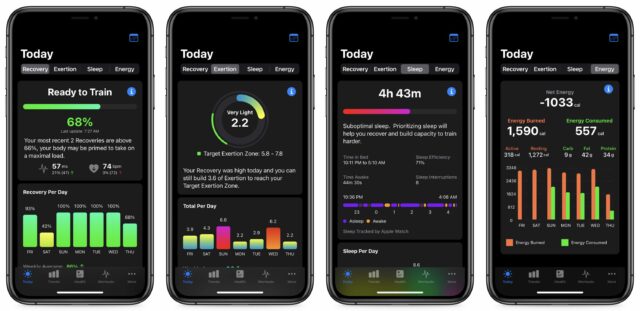
I keep the Exertion complication on my health-oriented watch face, and I find it a much nicer reminder than Apple’s finicky and judgmental Activity rings. If it’s near lunchtime and my exertion is near zero, I know I need to either go for a walk or hit the exercise bike. I try to aim for an exertion score of around 6 on my gym days and 2 on my off days. The exertion score is also a nice backup to my step counter when walking isn’t feasible, either due to work or severe weather.
Athlytic recently revealed something interesting for me. During a recent period of high anxiety, my heart rate was noticeably higher, which was reflected in higher-than-normal exertion scores and correlated to poorer sleep. That leads me to believe that my overall energy levels will improve if I can better manage my anxiety. Plus, my exertion dropped the day after an anxiety-ridden workout, so that’s more motivation to get in the gym.
AutoSleep for Sleep Tracking
I’ve long had unusual sleep patterns because I’m naturally nocturnal. Unfortunately, my kids are not. As I’ve sought to put on more muscle, sleep quality has become paramount because lifting is only half the equation. Quality sleep and diet are necessary to build muscle following that initial stimulus. And when I had COVID, I wanted to make sure I was maximizing my sleep every night so I’d recover faster.
You don’t need a separate app for basic sleep tracking. Just wear your Apple Watch to bed and put it in sleep focus by pulling up Control Center, tapping the moon, and selecting Sleep (see “Apple’s New Focus Feature May Be Overkill,” 20 January 2022). That prevents annoying notifications and keeps the screen from lighting up. You can check your metrics in Health each morning.
Various apps can offer different sleep metrics, but I’m not entirely satisfied with any of them. While testing sleep-tracking apps, I found a huge range of variability in the readings, as much as a couple of hours! The app I’ve found that’s closest to Athyltic’s approach is the $4.99 AutoSleep, which reports on metrics like respiration rate and HRV. It also offers a nightly sleep rating that I can use to gauge whether the efforts I’m employing to improve my sleep—like taking a shower before bed, getting in bed earlier, taking melatonin, etc.—are actually working. Remember, as Adam Engst points out in “Can Sleep Tracking in iOS 14/watchOS 7 Help You Sleep Better?” (16 October 2020), tracking by itself isn’t helpful; you need to make lifestyle changes if you want to sleep better.
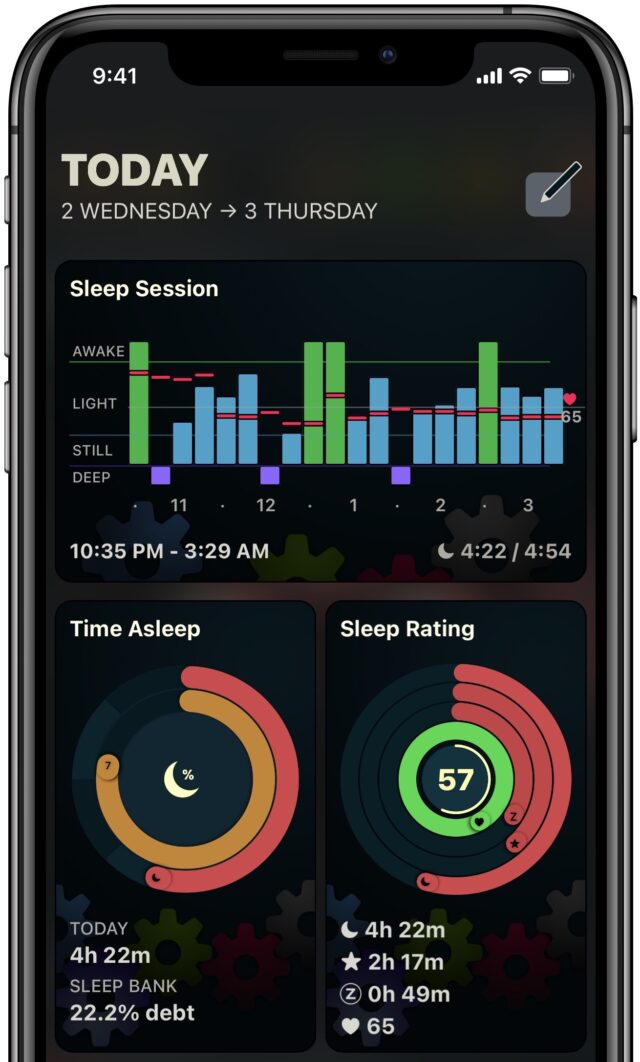
Cronometer for Calorie Counting
I’m not a fan of calorie counting. At best, the numbers are guesses since macronutrients like carbohydrates, fat, and protein are metabolized differently by the body, and every person metabolizes them differently. In short, calorie intake doesn’t connect well with calorie expenditure. Plus, regularly tracking calories is tedious. Thankfully I’ve stumbled across a sustainable diet that has helped me lose nearly 40 pounds over the past few months without calorie counting and even during the holidays, when I usually balloon up.
However, calorie counting has its place, largely in the “fewer is better” approach. I lose weight more consistently when I count calories because it provides a better sense of just how calorie-dense and carb-laden some foods are. In my case, I’m more worried about protein intake—even beyond needing more protein to support my weightlifting, many older people don’t consume enough protein, given that our bodies cease to absorb it as completely as we age.
For the past few years, my food tracking app of choice has been Cronometer. It has a simple, clean interface, a good database of foods, and a lot of great features for free. Cronometer Gold, which is $7.99 per month or $44.99 per year, adds useful features like a recipe importer and suggestions of foods to eat to hit nutritional targets.
Cronometer has been revealing, especially when synced with the activity data from Apple Health. I discovered that, with my current diet, I typically eat well below my maintenance calorie threshold. In fact, I probably need to eat more to encourage muscle growth, but I just can’t because the nutrient-rich foods I’ve been eating are so filling. That’s likely fine for now, but it might be a challenge if I get down to my ideal weight and want to build more muscle.
I also discovered that my diet is consistently low in vitamin C, potassium, and vitamin E, pointing toward adjustments I need to make or supplements I need to take. It’s also low in magnesium, vitamin D, and zinc, but I had already been taking supplements for those.
Stronglifts and Strong for Weightlifting Logs
When working on a lifting plan, it’s important to record your weights and number of reps so you can track progress and know how much you should lift in subsequent sessions. Numerous iPhone apps offer this capability, and although I’ve tested some, none has met all my needs.
I started with the free and simple Stronglifts 5×5 plan, which focuses on five lifts split over three days per week. There are two workouts. Workout A is squat, bench press, and barbell row. Workout B is squat, overhead press, and deadlift. Stronglifts has its own app that’s free to use for following the plan, with short video demonstrations of all the core lifts—essential when starting out.
I really like how well Stronglifts syncs with the Apple Watch. I can start a workout on my iPhone, complete sets on my Apple Watch, and view my rest timer on the watch, along with my heart rate. Data seamlessly flows between the iPhone and Apple Watch apps. And it integrates with Apple Health, logging my workouts as weight-training sessions.
But Stronglifts focuses on squatting to the point that it makes you feel like a failure if you’re bad at squats. Despite years of stretches, my hips just don’t move that way, so I wanted to try another routine. Stronglifts supports custom routines but only if you subscribe to StrongLifts Pro for $4.99 per month or $29.99 per year. There are also family and lifetime subscriptions.
Instead, I tried another highly recommended app: Strong, which is free to use with an optional subscription at the same prices as Stronglifts. I like Strong’s extensive exercise library with step-by-step instructions and animations.
Unfortunately, Strong drops the medicine ball with its Apple Watch support. By default, its Apple Watch and iPhone apps don’t communicate beyond the watch sending your workout data over to the iPhone app when you’re finished. A Live Sync setting is supposed to facilitate two-way communication, but it doesn’t work well, and the Apple Watch app crashed when I tried to pick up a workout I had started on my iPhone.
Later on, it worked better until it was time to end the workout. The iPhone app warned me to stop the workout on the Apple Watch so I didn’t lose data. I did that, and Strong still lost the set of crunches at the end of my workout. I was able to edit my workout on the iPhone, but it was still annoying and makes me leery of using Strong across both platforms.
I have many more weightlifting apps to try, but if I’m not happier with any of them, I might spring for a Stronglifts Pro subscription because of its superior Apple Watch integration. It’s nice being able to track a workout from my wrist while my iPhone sits quietly in my gym bag. If you have any recommendations in this arena, let me know in the comments.
Draw Your Own Rings
If you own an Apple Watch but have been unsatisfied with Apple’s Activity rings, the good news is that you have numerous alternatives to try. With Apple Health, the company has built a flexible platform that lets third-party developers read and analyze Apple Watch data however they want, which may be more helpful for your fitness goals.
However, it’s important not to let a fitness tracker run your life. It’s easy to fall into the trap of obsessing over calorie counting or using a poor readiness score as an excuse not to work out. Likewise, I’m not going to stand up just because my Apple Watch tells me to. Especially if I’m driving.
As I said at the beginning, a fitness tracker can only provide educated guesses that might help inform the process of achieving your fitness goals. Don’t mistake those metrics for your actual health and progress.
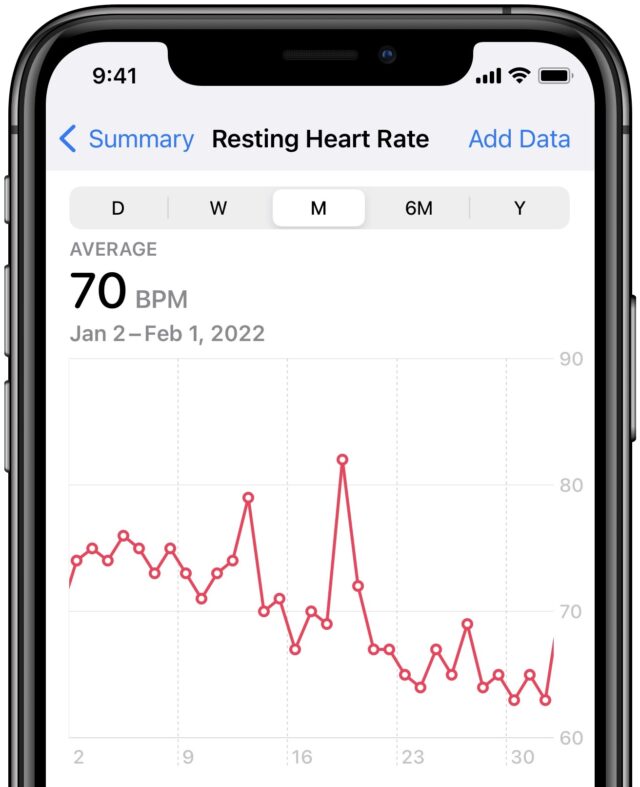
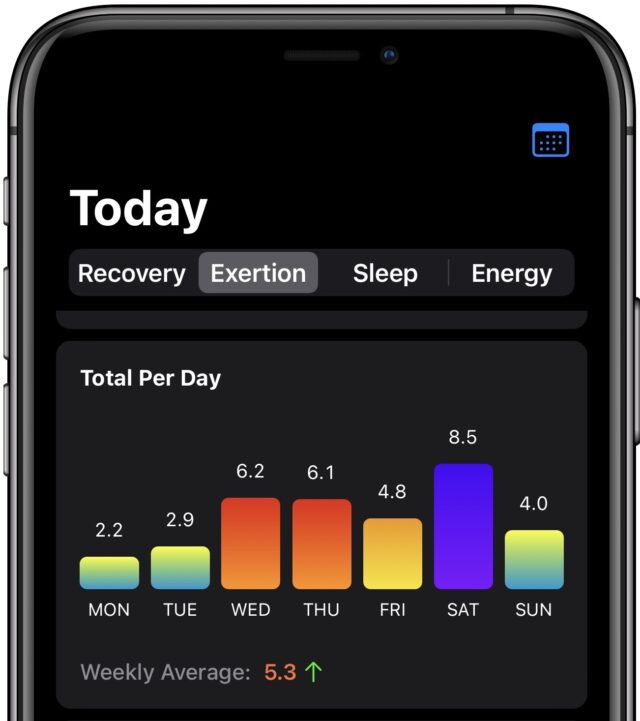
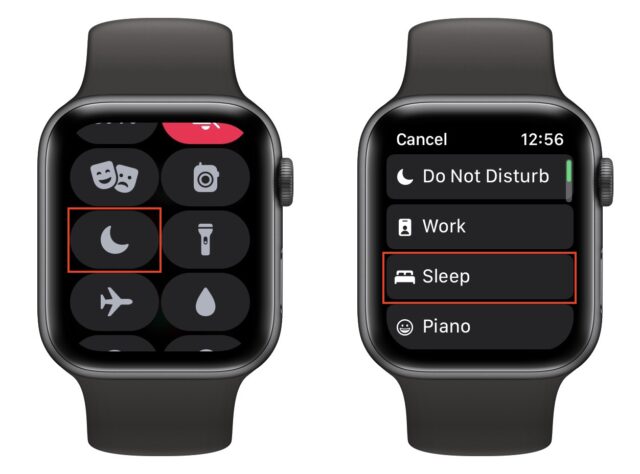
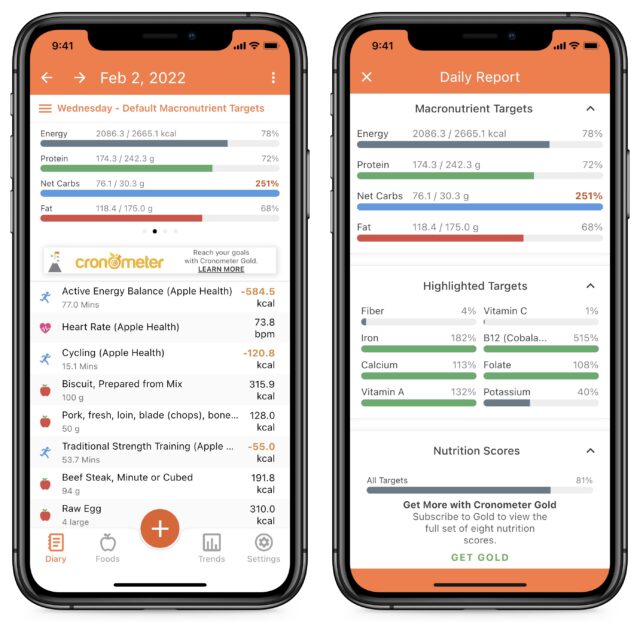
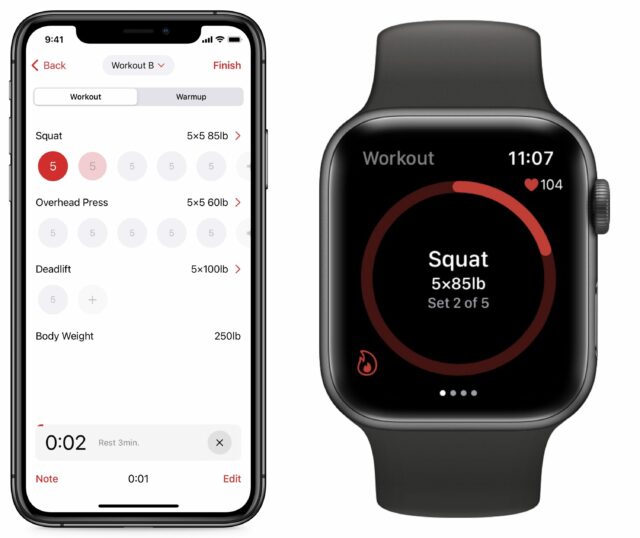
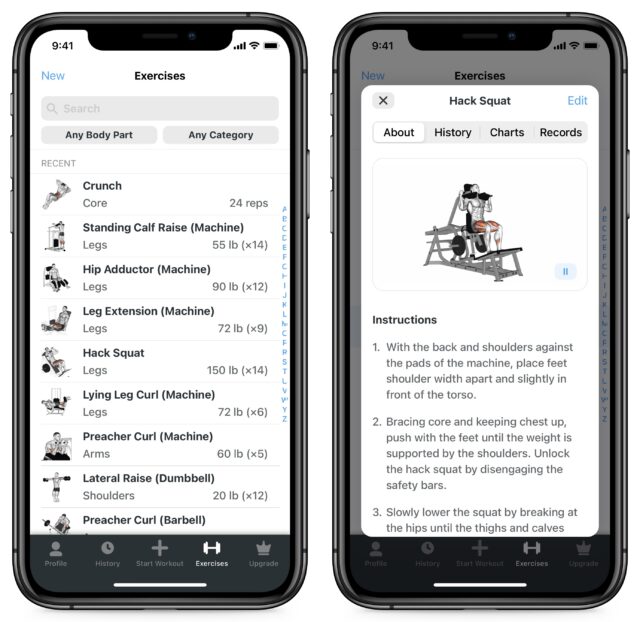
It is while you are using a workout app on the watch. While you are not doing a workout, heart rate is not considered (mostly because heart rate is only measured roughy every 5 minutes.) While you are not in a workout, the watch estimates activity based on arm movement. You need to be moving at the equivalent of a “brisk pace” in order to get a minutes from the green ring; in my experience, at least for me, that means walking at a pace of about 19:00/mile. I also get credit for things like shoveling snow, etc., but if you are doing something that does not involve moving your arms, you may not get credit unless you are using a workout app.
Triggering a workout seems to get the Exercise ring to fill more consistently, but it will fill without it.
I am curious about your smart scale. I have not had good luck with the couple I have tried. Which one are you using? Thanks.
I’ve found, when doing a workout or activity that isn’t historically tracked by the Apple Watch, that starting an Open activity has led to the AW logging it as an activity towards closing my rings. Funny thing, I got so ring focused that I wasn’t wearing my nice watches as much as I wanted to and have ended up buying Apple Watch sweat band to wear it on my ankle when not on my wrist. Really haven’t been using it as such, just wearing the AW on my opposite wrist more often than not. Seem to have gotten used to it that way.
Yes, that’s true. You can start an “Other” workout and take a nap and every minute of the “workout” will count toward your green ring.
For me, the purpose of the green ring is to actually measure brisk activity, so I’m fine with it the way it’s designed. It’s not a perfect measure, but it is more perfect than the Stand ring, which I consider of no value to me at all. (You can sit in a chair and swing your arm back and forth for a minute and get credit for “standing” and moving for that hour.) I think that it would be far more valuable to count total stand minutes in a day, with at least a 60 minute goal for a day.
When I first heard of Stand I thought it a great idea to remind me to move occasionally, but the implementation was so bad I turned it off years ago. I remember I was standing rinsing dishes for ten minutes, after doing some other activity, and I finally went and collapsed into a chair to rest, and about 15 seconds later the watch buzzed and told me I needed to stand up!
Utterly idiotic and pointless.
I consider most of the other watch fitness features to be almost as bad. Everyone has different levels of what they consider activity – my 81-year-old mother is quite different from a teenager, yet watch treats everyone the same.
I have a bad knee (torn ACL) so “activity” for me is walking my dog a mile or two. Despite steep hills and a dog that wants to run, watch never sees that as me being active unless I start a Workout. So dumb. There should be a preference setting for activity level.
Well, that certainly was a comprehensive overview!
I use the Apple Watch (Series 2) to track workouts (mostly walks) and calories. I like to synch my calories with MyFitnessPal. While the workouts synch, the Move calories, which, as you point out are really your calories above BMR, don’t automatically synch. So I open the Fitness app on my iPhone multiple times a day to see the current Move calories, enter those into MFP, and delete the workouts that synched. That way, I believe I have the most accurate calories listed for weight loss, and it includes housework and playing with my dog, etc.
I’ve been successful doing this, and am down 140 lb now to 144 lb, a BMI of 21.6.
My one gripe is that the power drains relatively quickly when doing walking workouts on the Watch. If I don’t top up the battery during lunch I might get dangerously low in the early evening. I wonder if later versions of the Watch are better about battery life.
Personally I use a Withing WS-50 Smart Body Analyzer. I think there have been one or two revisions since I got this almost 8 years ago. Weight, body fat % (not really reliable), HR (through your feet of all things, fails maybe 30% of the time). Readings get synced via WiFi to the Withings site and from there on to where I really need them, Garmin Connect, my Garmin devices, and several other sites.
As a cyclist with an Apple Watch (currently a 7), I’ve notice that the watch actually avoids taking HR readings during rides. I’m using much better devices to record rides (Garmin Edge 830, chest HR belt, other ANT+ sensors) anyway so I don’t really mind, but I do notice the gap in my HR readings in Health. I’m not at all interested in sleep tracking (tried once with a Withings Pulse, didn’t find the data at all useful), stay as far away as possible from the rings. When cross country skiing, which I’ve had a chance to do quite a bit in the last month, I leave my Apple Watch at home and use my Garmin Fenix 5+.
If you’re using a Series 2 watch, it’s probably a few years old and the battery might not be performing as well as when the watch was new. I have a Series 4, and it lasts comfortably through the day while tracking walks.
It’s actually less than 6 months old. I had a Series 1 under monthly warranty and something went wrong with it and Apple offered this one instead since they couldn’t find any Series 1s. So it’s pretty new.
I’ve been using the Eufy BodySense, which is a few years old at this point. It looks like Eufy no longer sells that exact model, but they offer the Smart Scale P1, which looks practically identical.
On my Series 1 WatchOS 6 ($199) I had to use open instead of Outdoor Walk. Elliptical and Rower worked fine. I upgraded to a Series 6 ($289) with WatchOS 7 and now 8 and Outdoor Walk now records all my exercise, even if I’m going too slow. Pretty sure heart rate works as it aligns with our Precore elliptical. If something ever happened to my watch I would immediately replace it. I use it in too many ways every day. I could do without a cell phone, but not my watch. I buy new watches but during Mother’s and Father’s day you can often find smoking hot deals. I have my family wearing a watch for soooo many reasons (husband: exercise, apple pay, alarms, weather, son: text/cell call alerts, fall detection, weather, timers, alarms, me: alarms, timers, exercise, text/cell alerts, water tracking)
Thank you. I was using the Withings Body Scale, but it never seemed to connect to my WiFi network in a reliable fashion. I then purchased a Wyze scale but I am unhappy with the readings on the scale. It only gives me weight and never the percentage. And I do not know whether that percentage was body fat or water weight. I will look into the Eufy scale.
My wife and I haven’t gotten into exercise apps (beyond what Apple offers on the iPhone) because we don’t trust the underlying data supplied by the watch. I have an Watch SE and go on 4 mile morning walks on a mostly flat route. Looking at the watch, heart rate seems to respond to uphill and downhill portions of my walk. But after the walk, looking at the heart rate graph shows lots of time periods with no data, and sharp up and down heart rates - some as high as 113 bpm (which I would notice if they occurred). It does track my path and give me movement credit. But that’s all. My wife (Watch 5) tells me it doesn’t give her credit for her walks (maybe she isn’t walking fast enough). And when she is at the gym, with a vigorous exercise routine, the watch doesn’t capture any calorie credit for the work. We are both healthy seniors so we don’t have a need for more measurements - but frankly wouldn’t trust the data these apps might report.
Yep. I sometimes juggle for fun. When I’m standing in place and doing the most basic juggling move, the Watch tells me I’m burning about 10 calories per minute.
Sorry to be late to the party here, but Josh’s article, as well as many of the comments here, seem to point out a common misconception (in my experience) about activity tracking on the Watch.
It’s really pretty simple: if you want your activity to be recorded when “working out”, you need to start a workout in the Workouts app! That’s the only way to get the watch to ‘pay attention’ to the degree that you want it to! Then, and mostly only then, will it give you the ‘credit’ you’re looking for when working out. This makes sense, especially, as someone else pointed out above, when you understand how much less the watch “pays attention” when you’re not doing a specific workout (like the less frequent heart rate measurement, for example).
Folks that are frustrated that their rings aren’t closing when they aren’t doing workouts with the Workout app are simply misunderstanding how the watch is designed. In today’s world, it’s understandable that we might expect more from the watch, but it’s never promised that kind of capability!
I’ve had every model since the first, and have always used it as I describe above, with results that seem more than adequate. And honestly, the Watch has done more to help me create a meaningful workout routine than anything else in my 60+ years!
To be fair, there are still plenty of aspects of the watch that drive me crazy (like the worthlessness of the Stand goal for someone like me who rarely sits), but if you rethink how you’re using the Activity function, I think you’ll find it finally makes sense, and actually works!